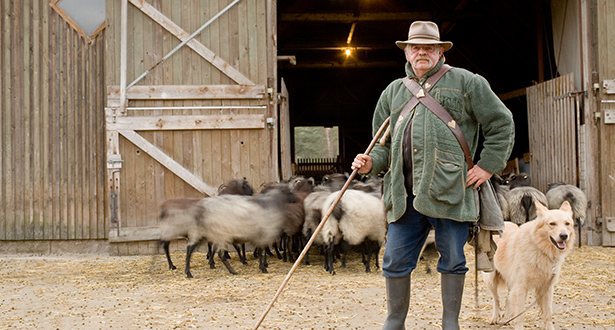Legends and poets from the Heath
"On Lüneburg Heath in that beautiful land...", is a line from a well-known song about the Heath written by Hermann Löns. Löns is probably the best-known Heath poet. But the poet Theodor Storm and August Freudenthal as well as the painters Christian Morgenstern, Eugen Bracht, de Bruycker and other artists were also inspired by the romantic landscape of Lüneburg Heath. The seclusion and pleasant contrast of the landscape to the increasing urbanization of the industrial age attracted them onto Lüneburg Heath. They all raised awareness of the fact that the Heath is more than an economically meaningless sand desert and raised awareness of the need for protection and its potential as a recreation area.
The most important piece of travel luggage is, and will remain, a happy heart.
(Quote: Herman Löns)
Short biography of Hermann Löns
Hermann Löns worked as a journalist and was known as a poet and a local author whose landscape ideal was the Heath. Born on 29th August 29 1866 in Culm near Bromberg (West Prussia), as the first of 14 children, he undertook his first systematic studies of nature and literary experiments as a young man. A large number of his works are characterized by animal stories and impressions of nature. Hermann Löns can also be seen as a pioneer of today's environmental protection: he was an advocate of nature conservation and for the establishment of the Nature Conservation Park in Lüneburg Heath in 1910. Some of his works were later the basis for films in the cinema, such as the Heimatfilm "Rot ist die Liebe" (1956), a film adaptation of his successful novel "Das zweite Gesicht". But also the hugely popular film "Green is the Heath" (1951) is based on the motifs of this local author writer. Hermann Löns died on 26th September 1914 at Loivre near Reims (France) after volunteering in the First World War.

![[Translate to Englisch:] Siegel: Europäische Union – Europäischer Fond für regionale Entwicklung.](/fileadmin/_processed_/d/6/csm_europaeische-union-fond-regionale-entwicklung-logo_50eda43563.gif)
![[Translate to Englisch:] Logo Europa für Niedersachsen.](/fileadmin/_processed_/b/e/csm_europa-fuer-niedersachsen-logo_7b3947c73c.gif)
![[Translate to Englisch:] Logo Leader.](/fileadmin/_processed_/c/5/csm_leader-logo_c9a57e9ee0.gif)
![[Translate to Englisch:] Siegel: Europäische Union – Europäischer Landwirtschaftsfond für die Entwicklung des ländlichen Raums.](/fileadmin/_processed_/4/7/csm_europaeischer-landwirtschaftsfond-logo_ce24e54bf4.gif)
![[Translate to Englisch:] Logo touristischer Partner Lüneburger Heide.](/fileadmin/_processed_/4/3/csm_lueneburgerheide_positiv-mit-schatten_logo_00411b91a8.gif)